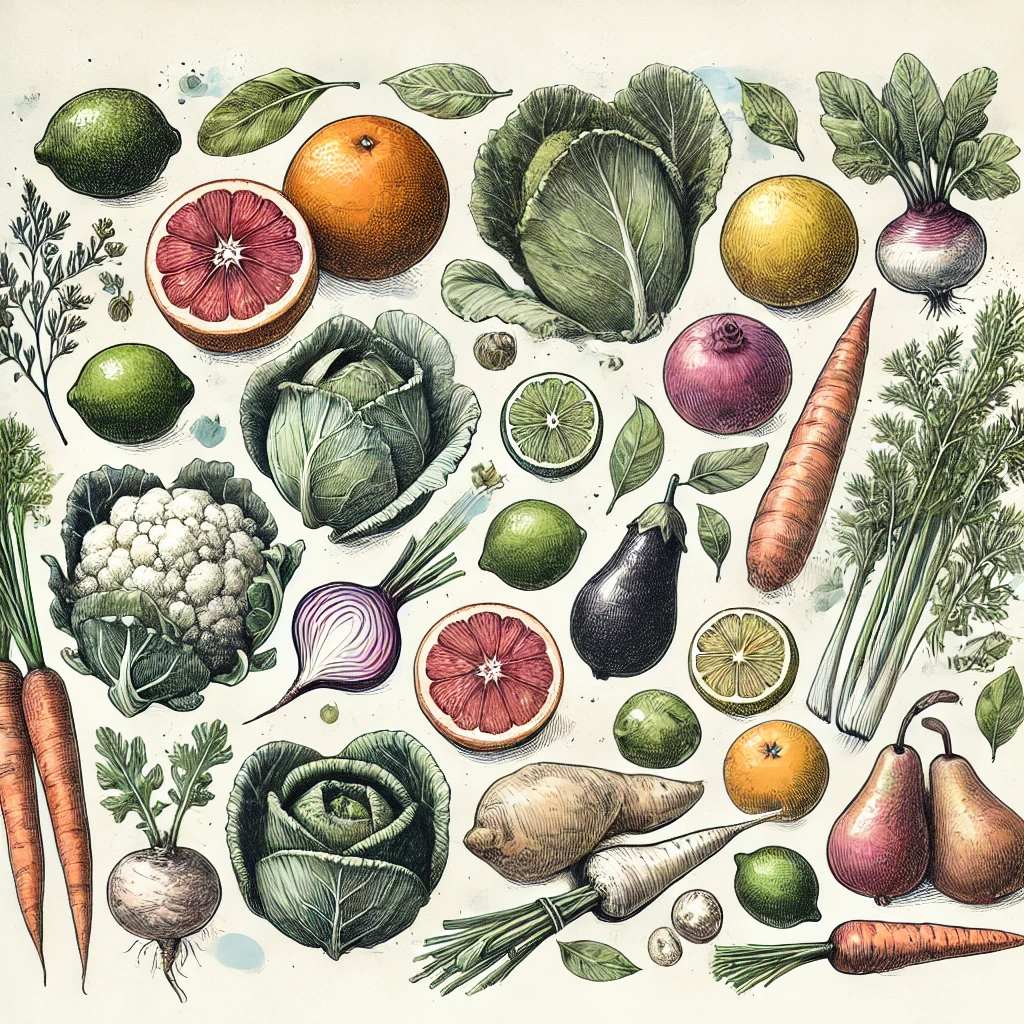February may be one of the coldest months of the year, but it is also a time when a variety of delicious and nutritious produce is at its peak. Eating seasonally is not only good for your wallet and the environment, but it also allows you to enjoy fruits and vegetables at their freshest and most flavorful. Let’s take a look at some of the seasonal produce you can savor this month.
Citrus Fruits
Winter is citrus season, and February is an excellent time to enjoy the vibrant flavors of oranges, grapefruits, lemons, and limes. These fruits are bursting with vitamin C, which is perfect for boosting your immune system during cold and flu season. Blood oranges, with their deep red flesh and sweet-tart flavor, are a standout this time of year. Try incorporating citrus into your diet by making fresh-squeezed juices, adding slices to salads, or using the zest in baked goods and marinades.
Root Vegetables
Root vegetables like carrots, parsnips, turnips, and sweet potatoes thrive in colder months and are packed with nutrients. These hearty vegetables are incredibly versatile and can be roasted, mashed, or added to soups and stews for a comforting meal. Beets, with their earthy sweetness, are another fantastic option. Roast them with olive oil or blend them into a smoothie for a nutrient-rich treat.
Cruciferous Vegetables
Brussels sprouts, cabbage, cauliflower, and broccoli are part of the cruciferous vegetable family, and they shine in February. These vegetables are loaded with vitamins, fiber, and antioxidants, making them an excellent choice for maintaining your health. Roast Brussels sprouts with a drizzle of balsamic glaze, or make a warming cauliflower soup for a cozy winter meal.
Leafy Greens
While leafy greens like kale, spinach, and Swiss chard are available year-round, they are particularly good in February. Cold weather makes kale and Swiss chard sweeter, and they are full of iron, calcium, and vitamins. Use these greens in hearty salads, sauté them as a side dish, or add them to soups and stir-fries.
Apples and Pears
Although apples and pears are harvested in the fall, many varieties store well and are still available in February. These fruits are perfect for baking, cooking, or simply eating fresh as a snack. Try poaching pears in red wine with a hint of cinnamon for an elegant dessert or baking apples with oats and brown sugar for a comforting treat.
Winter Squash
Winter squash varieties like butternut, acorn, and spaghetti squash are still in season in February. These squashes are rich in beta-carotene, fiber, and potassium, making them both delicious and nutritious. Roast chunks of butternut squash for a side dish, or use spaghetti squash as a low-carb alternative to pasta.
Mushrooms
Many types of mushrooms, including shiitake, oyster, and cremini, are widely available in February. Mushrooms add a savory depth to dishes and are a great source of antioxidants and minerals. Use them in risottos, stir-fries, or as a topping for pizza.
How to Make the Most of Seasonal Produce
- Shop Locally: Visit farmers’ markets or look for local produce at your grocery store to ensure the freshest options.
- Experiment with Recipes: Try new ways of preparing seasonal produce, such as roasting, grilling, or incorporating them into smoothies and baked goods.
- Preserve for Later: If you find an abundance of your favorite seasonal produce, consider freezing or pickling it to enjoy later in the year.
By embracing February’s seasonal produce, you can enjoy meals that are not only delicious but also packed with nutrients and flavor. Whether you are sipping fresh-squeezed orange juice or savoring a warm bowl of roasted root vegetable soup, there is something special about eating with the seasons. So head to your local market and stock up on these winter delights!
| Vegetables | Fruits | Herbs |
|---|---|---|
| Carrots | Oranges | Parsley |
| Parsnips | Grapefruits | Thyme |
| Turnips | Lemons | Rosemary |
| Sweet Potatoes | Limes | Sage |
| Brussels Sprouts | Apples | |
| Cabbage | Pears | |
| Cauliflower | ||
| Broccoli | ||
| Kale | ||
| Spinach | ||
| Swiss Chard | ||
| Winter Squash | ||
| Mushrooms |
